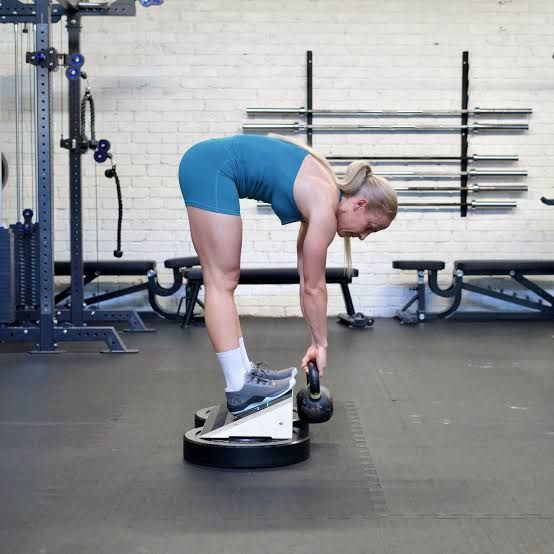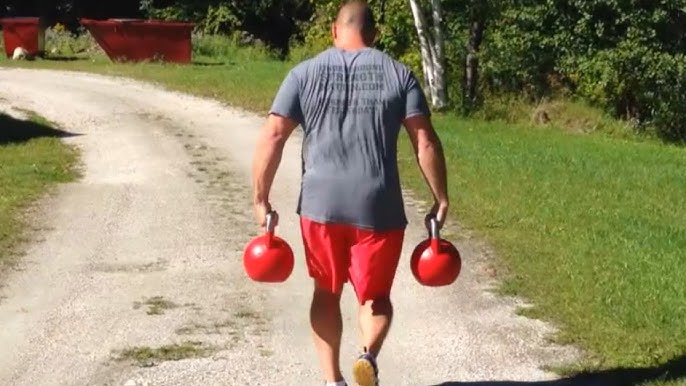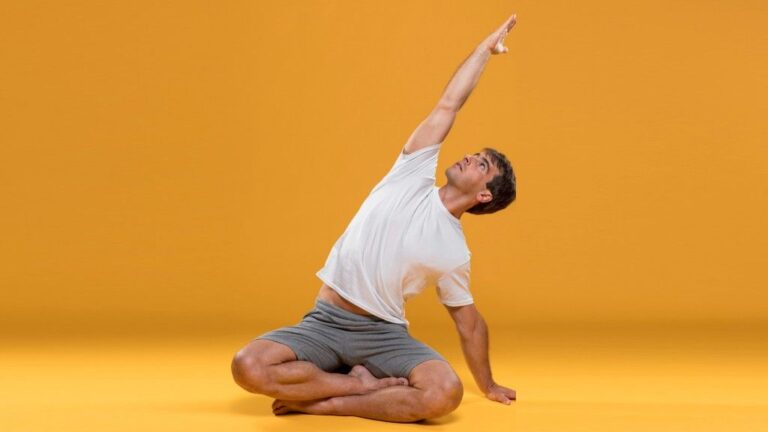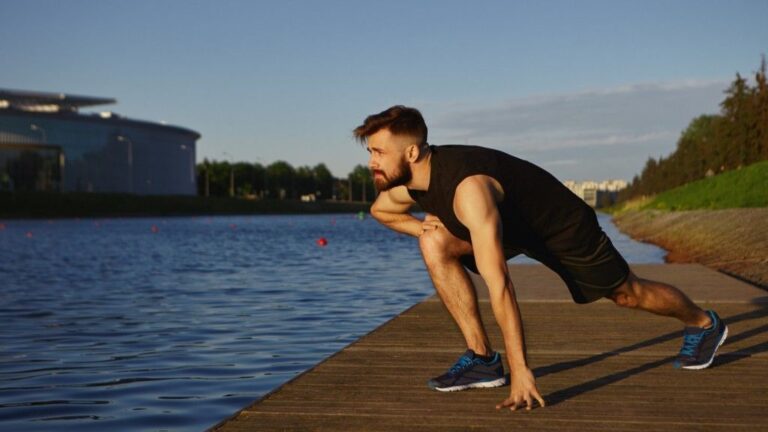4 Underrated Exercises That Expose and Fix Muscle Weakness – When you’ve spent over 15 years in the ring and another decade coaching athletes, you learn a thing or two about what makes a body resilient. Boxing taught me that strength isn’t just about throwing harder punches—it’s about moving smarter, staying balanced, and preventing injuries.
And let me tell you, some of the most effective exercises for building functional strength are the ones nobody talks about.
These underrated moves don’t just make you stronger—they expose weaknesses you didn’t even know you had. They target neglected areas like your shoulders, inner thighs, hips, and spine, creating a foundation of stability and mobility that complements traditional training. If you’re serious about performance and longevity, these four exercises deserve a spot in your routine.
Table of Contents
1. Cuban Press (Shoulders)

Purpose: Strengthen the rotator cuff and shoulder stabilizers to prevent injury and improve overhead mechanics.
What It Targets: Rotator cuff muscles (supraspinatus, infraspinatus, teres minor), deltoids, scapular stabilizers.
Why It’s Important:
Most people think shoulder health is all about heavy pressing or lateral raises, but true shoulder stability comes from strong rotator cuffs and proper scapular movement. Weakness here can lead to impingements, tendonitis, or worse—sidelining you from lifting, sports, or even everyday activities. The Cuban Press teaches your shoulders to work as a team, improving both mobility and resilience.
How to Do It:
- Hold a light dumbbell in each hand (start with 2–5 lbs). Stand tall with your core engaged.
- Begin with a row: pull the weights toward your ribcage, keeping elbows close to your sides.
- Rotate your arms outward, bringing your forearms perpendicular to the floor (like a goalpost position).
- Press the weights overhead until your arms are fully extended. Reverse the motion slowly.
- Perform 3 sets of 8–10 reps.
Pro Tip: Focus on controlled movements—this isn’t about speed or weight. Think “quality over quantity.”
Complements Traditional Training:
If you’re bench-pressing, overhead pressing, or doing pull-ups, the Cuban Press ensures your shoulders stay healthy and mobile enough to handle those big lifts without breaking down.
Also read – Slim Your Ankles in Just 1 Month with These 6 Body weight Moves
2. Copenhagen Plank (Inner Thighs & Hip Stability)

Purpose: Build inner thigh strength and hip stability to enhance lateral movement and reduce groin strain.
What It Targets: Adductors (inner thighs), gluteus medius, obliques, hip flexors.
Why It’s Important:
Your inner thighs and hips are crucial for balance, agility, and power generation—but they’re often overlooked. Weak adductors and unstable hips can lead to groin pulls, knee pain, and inefficient movement patterns. The Copenhagen Plank isolates and strengthens these areas, making it a game-changer for athletes and lifters alike.
How to Do It:
- Set up a bench or sturdy surface at knee height. Lie on your side with one elbow under your shoulder and the inside edge of your top foot resting on the bench.
- Lift your hips so your body forms a straight line from head to heels. Engage your core and squeeze your top leg into the bench.
- Hold for 20–30 seconds, then switch sides. Work up to 45-second holds per side.
Pro Tip: Keep your bottom knee bent on the ground if you’re new to this move—it reduces difficulty while still targeting the right muscles.
Complements Traditional Training:
Whether you’re sprinting, squatting, or cutting laterally, strong adductors and stable hips will keep you explosive and injury-free. This move bridges the gap between lower-body strength and dynamic movement.
3. Jefferson Curl (Spinal Mobility & Posterior Chain Strength)

Purpose: Improve spinal articulation and strengthen the posterior chain (hamstrings, glutes, lower back) for better posture and injury prevention.
What It Targets: Hamstrings, erector spinae, glutes, thoracic spine, grip strength.
Why It’s Important:
Modern life has us hunched over desks and screens, tightening our spines and weakening our backs. The Jefferson Curl counteracts this by teaching segmental control of your spine while stretching and strengthening the entire posterior chain. It’s especially valuable for deadlifters, runners, and anyone who wants to move with ease.
How to Do It:
- Stand upright holding a light kettlebell or dumbbell with both hands. Feet should be hip-width apart.
- Slowly round your spine vertebra by vertebra, starting from your neck and rolling down toward the floor. Let gravity guide the weight as far as your flexibility allows.
- Reverse the motion, articulating each part of your spine back into an upright position.
- Perform 3 sets of 6–8 slow, deliberate reps.
Pro Tip: Start with little to no weight until you master the movement pattern. Avoid jerking or using momentum—this is all about control.
Complements Traditional Training:
Deadlifts, squats, and rows put significant stress on your spine and posterior chain. The Jefferson Curl prepares these areas for heavier loads while promoting long-term mobility and injury resistance.
Also read – If You Can Do This for 1 Minute, You’re Fitter Than Average
4. Suitcase Carry (Core Stability & Grip Strength)

Purpose: Develop unilateral core stability, grip endurance, and anti-rotational strength.
What It Targets: Obliques, transverse abdominis, lats, forearms, grip.
Why It’s Important:
Carrying heavy objects unilaterally is a common real-world demand, yet most people never train for it. The Suitcase Carry forces your core to stabilize against rotation, mimicking how your body works outside the gym. It also builds grip strength—a key indicator of overall strength and longevity.
How to Do It:
- Grab a heavy dumbbell or kettlebell in one hand. Stand tall with shoulders square and core braced.
- Walk 20–30 meters (or 30 seconds) while resisting the urge to lean or rotate toward the weighted side.
- Switch hands and repeat on the other side. Aim for 3 rounds per arm.
Pro Tip: Imagine crushing the handle with your hand and screwing your feet into the ground—it activates your lats and stabilizes your torso.
Complements Traditional Training:
From farmer’s carries to barbell squats, nearly every lift requires a strong, stable core. The Suitcase Carry exposes imbalances and fortifies your midsection, ensuring you’re ready for anything.
Also read – 6 Quick Daily Moves to Burn Belly Fat Fast
Final Thoughts: Train Smarter, Not Harder
The best exercises aren’t always the flashiest ones—they’re the ones that fix what’s broken before it breaks you. Incorporating these underrated moves into your routine will not only expose hidden weaknesses but also build a bulletproof body capable of handling whatever life throws your way.
Remember, progress takes patience. Start light, focus on form, and trust the process. As a coach and former fighter, I can tell you this: the strongest bodies are built on foundations of mobility, stability, and balance. So grab a dumbbell, find some space, and get to work. Your future self will thank you.




